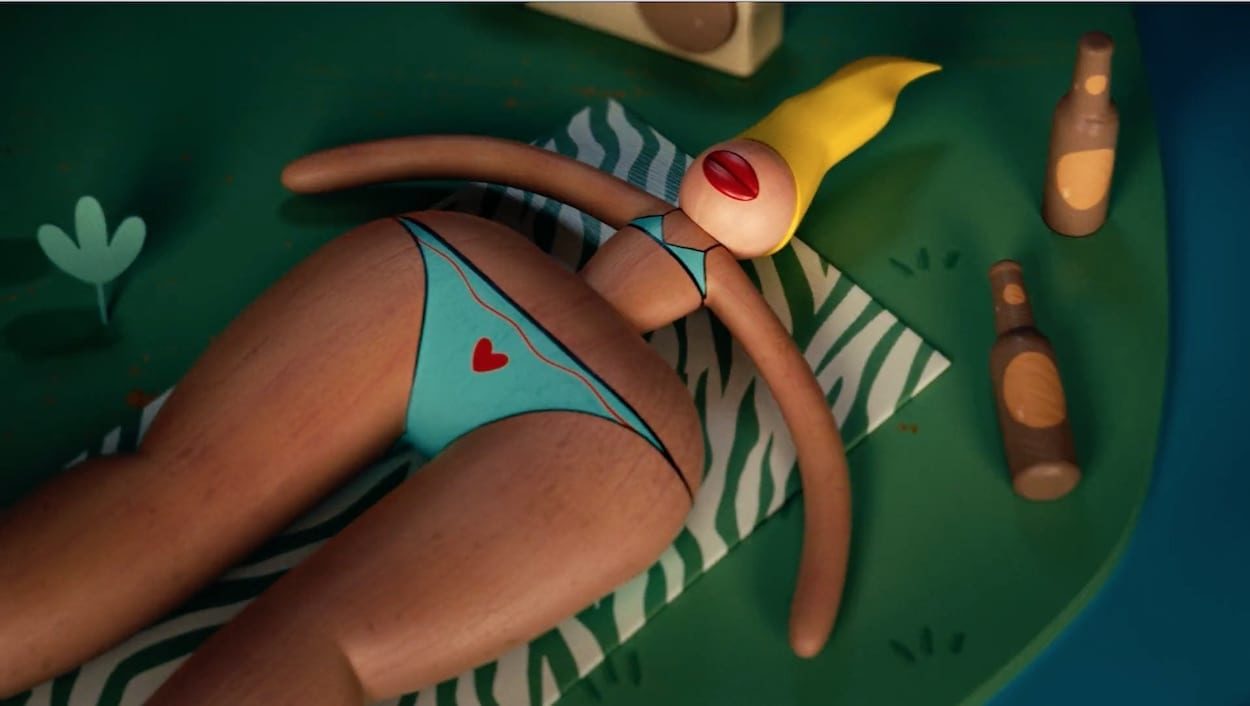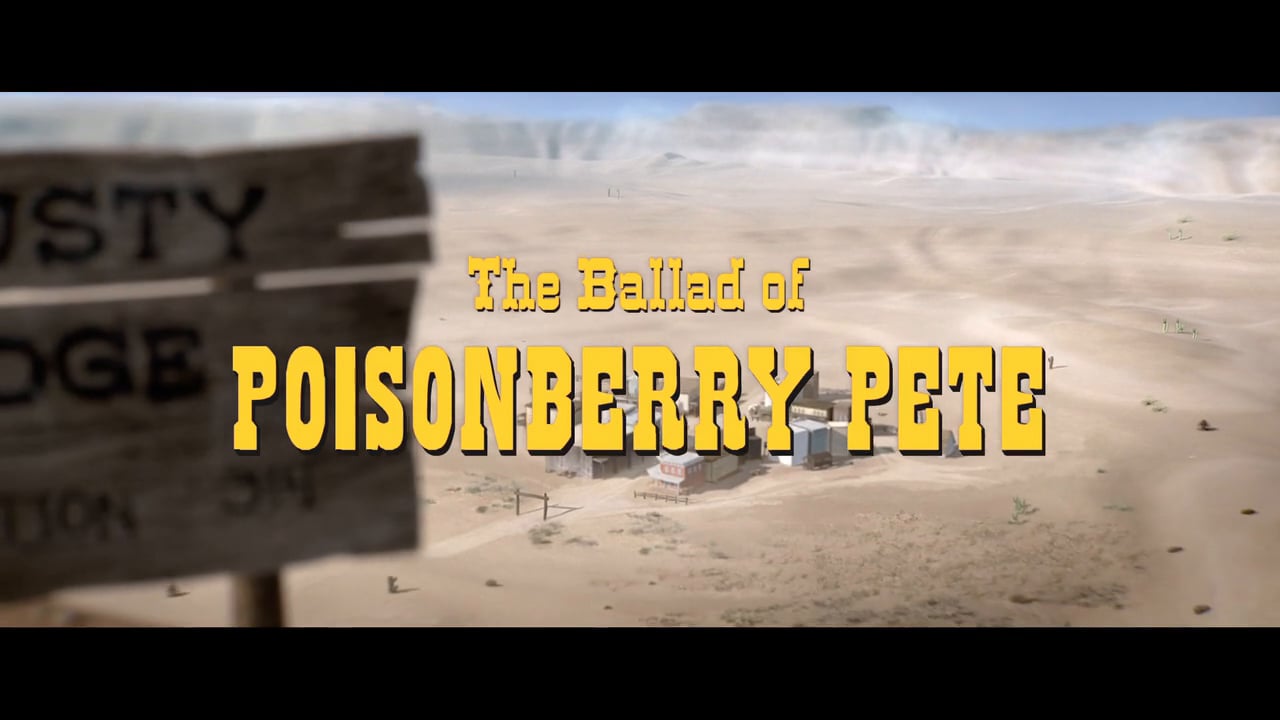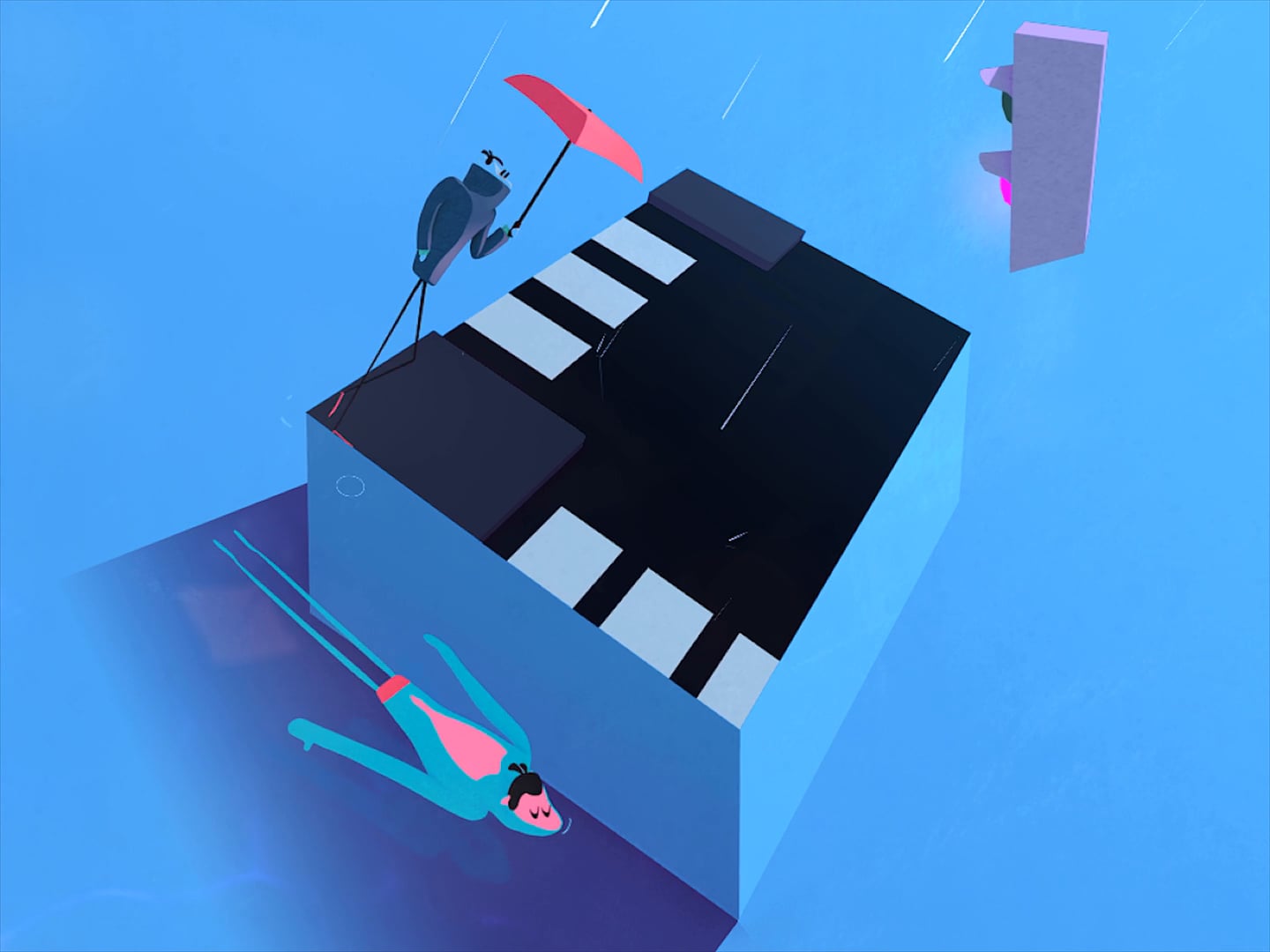Where did you train in animation? Please give us your story of how you became an animator and were picked up by the major studios in LA.
I began in animation dreaming of working on feature film projects, I wanted to work in the big studios on big projects with the big talents. After graduating from Ringling College of Art and Design I was fortunate enough to find my way to just that place. It was an incredible learning experience but I quickly started feeling that being a tiny gear in a huge machine wasn’t exactly my cup of tea. After a few years of learning from the great artists around me I decided to move back home and work on more personal projects with smaller more intimate teams.
Where’s home and where’s your day-to-day studio?
Home’s in Tel-Aviv Israel and the ‘studio’ is just a little desk and a comfy orange chair at home.
Please describe your working creative process – do ideas normally flow easily with a new brief? Do you tend to map everything out before production begins in chronological order?
That’s a tricky one. Ideas take a while, they usually come after I give up on trying to think of one as I’m doing something completely rudimentary like washing the dishes or taking a shower. I like planning things in advance but still leaving enough room to find things as the project evolves. Many times I get the answers from real life via strange unexplained synchronicities that just seem to work with the project. That kind of stuff keeps things fresh and exciting throughout production.
What are your essential pieces of kit?
A few pieces of paper, some markers and a big fat computer with Maya, Photoshop and Nuke.
Do you always have a personal project on the go in between your commercial work?
For sure! As filmmakers personal projects are our way to express ourselves and share how we comprehend the complex world around us. Usually that’s not the focus with commercial projects so finding the right balance between the two and letting each type of work influence the other is crucial for our growth as artists.
We loooove your latest piece Ma’agalim for Jane Bordeaux band. Please tell us about the process of making this – how did the story of a doll stuck in place and time in a forgotten old penny arcade come about?
The inspiration came from a visit a few years back at Musée Mécanique in San Francisco, a museum devoted to antique penny arcade machines. Walking around the museum there was a feeling that time had stopped, the characters inside the machines had been destined to a never ending cycle repeating the same action over and over again. That metaphor worked perfectly with the lyrics.
What were the main challenges of the production and how were these resolved?
Ma’agalim means circles in Hebrew. Early on we decided that the ‘circle’ will be a dominant element throughout the film. The circular design is in the cylinder world itself, the gears, many of the character’s features and set properties… basically circle are everywhere graphically and thematically.
In one of our first meetings with the band we pitched an idea that the whole music video runs as a loop, which tied in with the circle theme, they suggested that as the music intensifies towards the end we shatter the world. We agreed with the note but couldn’t find a justification for that to happen. What does shattering the world mean? how does it relate to the lyrics? We kept banging our heads, with one question to guide us: How do you break out of a circle? A Line! A line has a beginning and an end, it’s the opposite of a circle. It seems so obvious now but it took a while to get there. That led us to transform the cylinder into a flat surface, finally breaking our protagonist out of her cycle.
Are there any particular bands you’d love to do a film for?
I’d love to make a film for Villagers and Jon Hopkins.
Please list five inspirations that have connected with you recently – these can be films, music videos, books, architecture, people, anything you like!
The Master by Paul Thomas Anderson
Short Cuts by Robert Altman
The Wind-Up Bird Chronicle By Haruki Murakami
Cecilia & Her Selfhood (Villagers) by Adrien Merigeau
Coda by Alan Holly
LINKS















